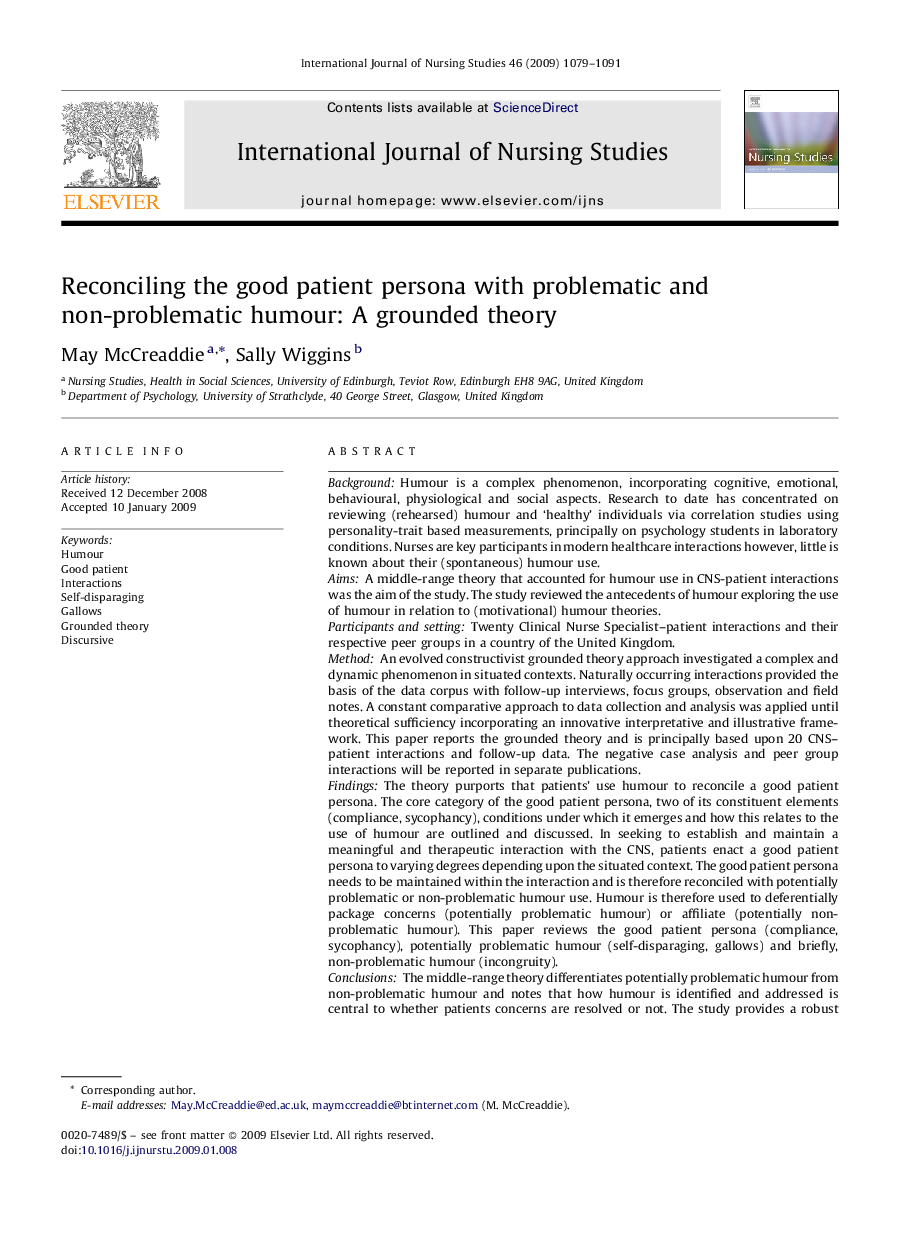| Article ID | Journal | Published Year | Pages | File Type |
|---|---|---|---|---|
| 1076554 | International Journal of Nursing Studies | 2009 | 13 Pages |
BackgroundHumour is a complex phenomenon, incorporating cognitive, emotional, behavioural, physiological and social aspects. Research to date has concentrated on reviewing (rehearsed) humour and ‘healthy’ individuals via correlation studies using personality-trait based measurements, principally on psychology students in laboratory conditions. Nurses are key participants in modern healthcare interactions however, little is known about their (spontaneous) humour use.AimsA middle-range theory that accounted for humour use in CNS-patient interactions was the aim of the study. The study reviewed the antecedents of humour exploring the use of humour in relation to (motivational) humour theories.Participants and settingTwenty Clinical Nurse Specialist–patient interactions and their respective peer groups in a country of the United Kingdom.MethodAn evolved constructivist grounded theory approach investigated a complex and dynamic phenomenon in situated contexts. Naturally occurring interactions provided the basis of the data corpus with follow-up interviews, focus groups, observation and field notes. A constant comparative approach to data collection and analysis was applied until theoretical sufficiency incorporating an innovative interpretative and illustrative framework. This paper reports the grounded theory and is principally based upon 20 CNS–patient interactions and follow-up data. The negative case analysis and peer group interactions will be reported in separate publications.FindingsThe theory purports that patients’ use humour to reconcile a good patient persona. The core category of the good patient persona, two of its constituent elements (compliance, sycophancy), conditions under which it emerges and how this relates to the use of humour are outlined and discussed. In seeking to establish and maintain a meaningful and therapeutic interaction with the CNS, patients enact a good patient persona to varying degrees depending upon the situated context. The good patient persona needs to be maintained within the interaction and is therefore reconciled with potentially problematic or non-problematic humour use. Humour is therefore used to deferentially package concerns (potentially problematic humour) or affiliate (potentially non-problematic humour). This paper reviews the good patient persona (compliance, sycophancy), potentially problematic humour (self-disparaging, gallows) and briefly, non-problematic humour (incongruity).ConclusionsThe middle-range theory differentiates potentially problematic humour from non-problematic humour and notes that how humour is identified and addressed is central to whether patients concerns are resolved or not. The study provides a robust review of humour in healthcare interactions with important implications for practice. Further, this study develops and extends humour research and contributes to an evolved application of constructivist grounded theory.
